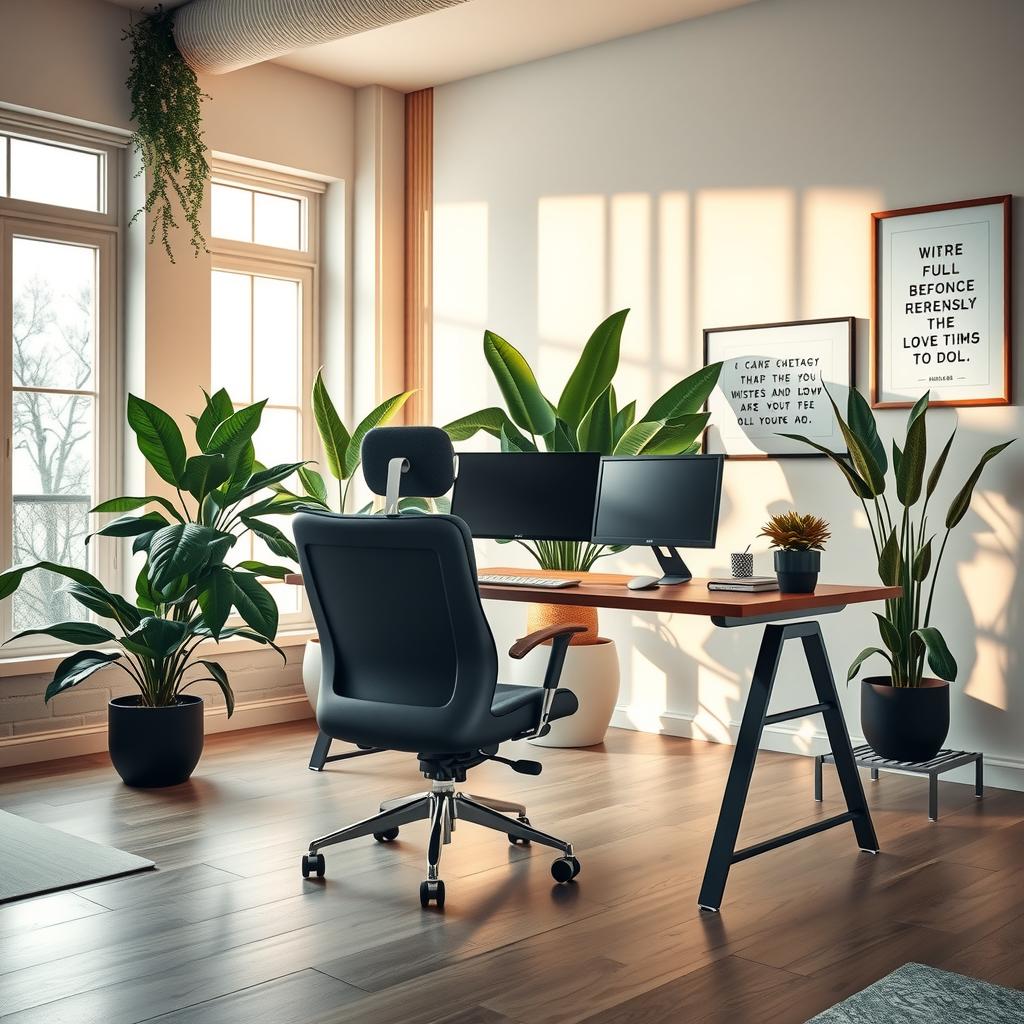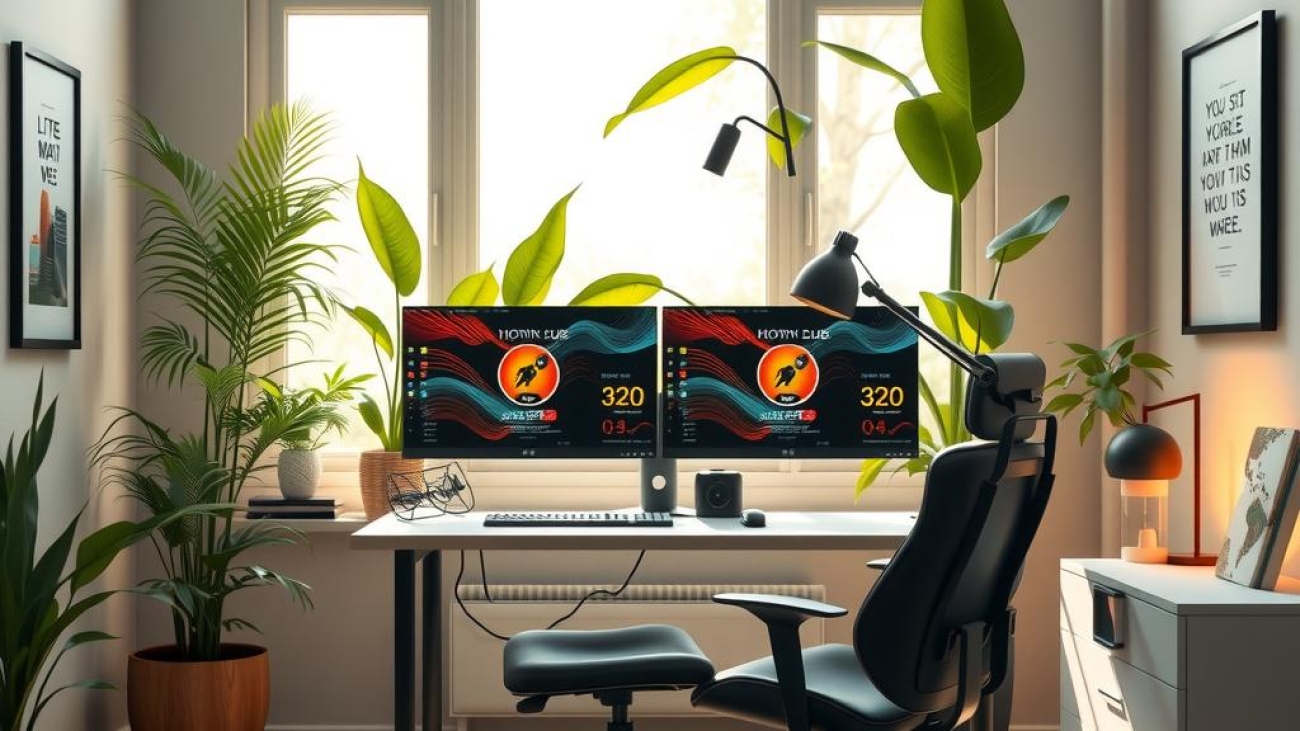As the landscape of work continues to evolve, an increasing number of professionals are embracing the concept of remote work. While this shift offers unparalleled flexibility and eliminates long commutes, it also presents unique challenges that can impact productivity and overall job satisfaction. Many individuals find themselves grappling with how to create an efficient home office setup that meets their needs while adhering to telecommuting standards established by their employers. This begs the question: what are the minimum requirements for a home office that supports full-time remote work?
Establishing a productive workspace is not just about having a desk and a chair; it involves carefully considering various elements that contribute to comfort, focus, and efficiency. In today’s blog post, we will explore essential aspects such as ergonomics, technology infrastructure, lighting solutions, and organizational tools—each playing a vital role in fostering an environment conducive to success in work from home scenarios. With so many distractions at home—from household chores to family members vying for attention—it becomes imperative for remote workers to identify specific workspace essentials that promote concentration.
Furthermore, understanding these minimum requirements is crucial not only for individual productivity but also for maintaining professional standards expected by organizations during this era of widespread telecommuting. By investing time in optimizing their home offices according to best practices outlined here, employees can significantly enhance their performance while simultaneously enjoying the benefits of flexible working arrangements.
Throughout this article, readers will be guided through practical tips aimed at creating an effective home office setup tailored specifically for full-time remote work without compromising on comfort or functionality. From selecting appropriate furniture designed with ergonomics in mind to integrating modern technological tools that streamline communication and task management—there are numerous strategies available.
By delving into each area systematically and offering actionable advice based on industry insights and user experiences alike, this post aims not just at informing but empowering individuals embarking on or continuing their journey through remote employment opportunities. So whether someone is setting up a dedicated corner of their living room or transforming an entire spare room into a functional workspace—the secrets behind achieving maximum productivity await discovery within these pages!

Key Components: Essential Elements for an Effective Home Office Setup
Creating a productive home office is crucial in the current landscape of remote work, where many professionals have transitioned to working from home full-time. To ensure that individuals can perform at their best, it is important to focus on certain minimum requirements when designing their workspace. These include ergonomic furniture, proper lighting, and reliable technology—all essential components that contribute to a conducive environment for productivity.
When considering the design of a home office, one must pay close attention to ergonomics. Choosing chairs and desks that support good posture can significantly reduce discomfort during long hours of work. An adjustable chair with lumbar support combined with a desk at the right height creates an optimal setup that encourages healthy working habits. Investing in such ergonomic solutions not only enhances comfort but also boosts concentration levels, which are vital for maintaining high productivity while navigating telecommuting standards.
Another critical aspect of establishing an effective workspace is ensuring adequate lighting. Natural light has been shown to improve mood and energy levels; therefore, positioning the desk near windows can be beneficial. However, artificial lighting should also be considered to avoid eye strain during late-night tasks or cloudy days. Utilizing soft white bulbs or task lamps can create an inviting atmosphere conducive to creativity and focus—two key elements necessary for successful remote work.
Finally, having reliable technology cannot be overlooked when setting up a workspace essentials framework. This includes investing in high-speed internet connections and quality hardware like laptops or desktop computers equipped with efficient software tools tailored for collaboration and project management. Ensuring these technological needs are met allows workers to stay connected with colleagues seamlessly while minimizing frustrations caused by technical issues—ultimately leading towards improved overall performance.
By focusing on these core components—ergonomic setups, appropriate lighting conditions, and dependable technology—individuals can cultivate a home office designed specifically for success in full-time remote work scenarios. Each element plays an integral role in forming a cohesive environment where employees feel empowered rather than hindered by their surroundings as they engage deeply within their daily routines from home.

Creating a Productive Workspace
Essential Elements for Your Home Office
Establishing an effective home office is crucial for enhancing productivity and ensuring comfort during remote work. One of the fundamental components of this setup is ergonomic furniture, which plays a significant role in maintaining physical health while working from home. Adjustable desks, supportive chairs, and proper monitor placement can help prevent strain and fatigue, aligning with telecommuting standards that prioritize worker well-being. In addition to ergonomic considerations, proper lighting is essential; natural light is ideal as it enhances mood and focus, but incorporating adjustable desk lamps with warm light can also create an inviting atmosphere that mitigates eye strain during long hours.
Moreover, reliable technology forms the backbone of any efficient workspace essentials list. High-speed internet connections and powerful computers are necessary to facilitate smooth communication and workflow in today’s digital landscape. Investing in quality peripherals such as noise-canceling headphones or external webcams ensures seamless interactions during virtual meetings—an important aspect of modern remote work culture.
To further enhance productivity tips within the home office environment, organization cannot be overlooked. Utilizing storage solutions like shelves or filing cabinets helps maintain tidiness by keeping clutter at bay—a critical element when striving for focus amid potential distractions at home. Additionally, personalizing the workspace with plants or artwork not only adds aesthetic appeal but can also foster creativity and motivation throughout the day.
Ultimately, achieving a productive workspace requires attention to detail across various elements—from choosing supportive ergonomic options to maximizing technological efficiency—all designed around individual needs to support sustained performance while telecommuting. By thoughtfully selecting each component based on these minimum requirements for comfort and functionality, individuals can transform their homes into inspiring offices conducive to success in any professional endeavor undertaken remotely.
Setting Clear Telecommuting Standards for Enhanced Productivity
Establishing a Productive Remote Work Environment
In the evolving landscape of remote work, establishing robust telecommuting standards is essential for fostering focus and minimizing distractions. A well-defined set of guidelines not only enhances individual productivity but also cultivates a cohesive team environment despite physical distances. Organizations must prioritize creating home office setups that are conducive to concentration; this includes ensuring that employees have access to essential tools such as high-speed internet, ergonomic furniture, and adequate lighting. Moreover, setting clear expectations around working hours and availability can significantly reduce interruptions from household activities or personal obligations. As workers adapt to their new work from home routines, it becomes crucial to define minimum requirements for communication frequency and project updates. Regular check-ins via video conferencing can help maintain interpersonal connections while keeping everyone aligned on goals.
The Role of Workspace Essentials in Telecommuting
The significance of optimizing one’s workspace cannot be overstated when discussing telecommuting standards. An effective workspace essentials checklist should include items that promote comfort and efficiency—such as noise-canceling headphones to drown out background noise or organizational tools like planners and digital task managers that streamline workflow. Studies have shown that a clutter-free desk contributes positively to mental clarity; thus, encouraging employees to personalize their spaces while maintaining organization is vital for sustaining motivation during work hours. Furthermore, leveraging technology through collaborative platforms ensures seamless communication among team members regardless of location; this approach not only fortifies accountability but also nurtures an atmosphere where ideas can flourish without the constraints typically encountered in traditional offices.
Fostering Focus Through Structured Work Hours
Another critical aspect of successful remote work lies in establishing structured work hours which align with both company objectives and personal productivity peaks. By advocating for designated start times and breaks within the daily schedule, employers empower their workforce to develop healthier work-life boundaries—a common challenge faced by those operating from home environments. Research has indicated that individuals who adhere strictly to defined working periods tend to experience reduced burnout levels compared to those who blend personal time with professional responsibilities indiscriminately. Moreover, integrating regular intervals dedicated solely towards rest not only recharges mental faculties but ultimately enhances overall output quality during active tasks.
Reducing Distractions: Strategies For Success
To effectively mitigate distractions inherent in remote settings requires strategic planning at both individual and organizational levels. Employees should be encouraged explicitly about cultivating habits centered around minimizing interruptions—this could entail designating specific areas within the home exclusively reserved for professional activities or employing techniques such as time blocking where focused intervals are interspersed with short breaks away from screens or other potential distractions like social media notifications or family engagements nearby.
Continuous Improvement through Feedback Mechanisms
Lastly, implementing feedback loops remains paramount in refining telecommuting practices over time since what works initially may evolve as circumstances change either externally due pandemic-related conditions shifting workplace expectations or internally due growth trajectories affecting team dynamics significantly each quarter onwards inevitably altering performance metrics accordingly . Therefore fostering an open dialogue between management personnel regarding challenges faced allows organizations collectively pivot strategies promptly enhancing adaptability toward unforeseen shifts thereby reinforcing resilience within teams whilst simultaneously acknowledging achievements celebrated along these journeys together!
Creating an Ergonomic Workspace at Home
Optimize Your Comfort for Enhanced Focus
In the realm of remote work, establishing a comfortable and ergonomic workspace is paramount for sustaining productivity. Workers often overlook the importance of their physical environment, yet small adjustments can yield significant benefits. First and foremost, investing in a quality office chair that provides adequate lumbar support can prevent back strain during long hours spent working from home. Additionally, ensuring that the desk height allows the forearms to be parallel to the ground minimizes wrist discomfort while typing—a common issue among telecommuters. The positioning of screens also plays a crucial role; they should ideally be at eye level to avoid neck strain. These simple changes not only enhance comfort but also promote better posture, directly influencing one’s ability to focus on tasks effectively.
Furthermore, incorporating elements such as proper lighting can significantly impact overall well-being and performance levels. Natural light is ideal; it helps regulate circadian rhythms and boosts mood—factors essential for maintaining high energy levels throughout the day. If natural light isn’t accessible, opting for adjustable LED lights that mimic daylight can serve as a suitable alternative. By prioritizing these workspace essentials, remote workers create an environment conducive to sustained concentration and efficiency.
Establishing Boundaries for Work-Life Balance
Protecting Your Time in a Remote Environment
One challenge inherent in working from home is maintaining boundaries between professional responsibilities and personal life—an essential aspect of effective telecommuting standards. Without clear delineation between work time and leisure time, individuals may find themselves perpetually connected or overwhelmed by distractions around them at home—a scenario detrimental to both productivity and mental health. To combat this issue, it’s advisable for remote workers to set specific work hours each day comparable to those observed in traditional office settings.
Moreover, designating certain areas within one’s residence strictly as “work zones” fosters discipline in adhering to these established schedules; this spatial separation makes it easier mentally shift gears into “work mode.” Communicating these boundaries with family members or housemates further aids in minimizing interruptions during designated working hours, allowing individuals greater focus on their tasks without external distractions clouding their efforts.
To reinforce commitment underpins successful remote engagement strategies; using tools like digital calendars not only organizes daily tasks but also serves as reminders when it’s time unplug from responsibilities altogether—protecting precious downtime necessary for rejuvenation.
Utilizing Technology Tools Effectively
Equip Yourself with Essential Productivity Resources
Embracing technology tools designed specifically for enhancing productivity tips transforms how remote workers manage their responsibilities amid potential disruptions endemic within home environments today’s workforce faces daily challenges unique compared colleagues operating exclusively within corporate walls might encounter different dynamics impacting collaboration efforts however leveraging applications tailored aid workflow optimization would make navigating complex projects smoother than ever before imaginable utilizing platforms like Trello or Asana enables teams coordinate assignments track progress easily across various touchpoints thus delivering exceptional results collectively reinforcing accountability mutual respect shared goals achieved through seamless communication channels offered via software solutions such Slack Microsoft Teams foster connections amongst peers wherever geographical distances exist elevating morale boosting creativity innovation teamwork cultures thrive amidst uncertainty creating resilient adaptable workforce capable overcoming obstacles together through dedication perseverance realizing ambitious objectives regardless setbacks encountered along journey ahead building success stories resonant beyond confines individual experience alone amplifying collective achievements rooted shared vision purpose ultimately leading fulfilling careers flourishing professionally personally alike achieving dreams aspirations worth pursuing relentlessly despite trials tribulations faced along way forward representing brighter future awaits those willing embrace change step boldly unknown territories transforming lives positively forevermore!
Creating a successful home office setup is crucial for anyone engaged in full-time remote work. To achieve a high level of productivity, it is essential to meet the minimum requirements that contribute to an effective workspace. A well-structured environment not only enhances focus but also supports physical well-being.
One of the primary components of an optimal home office is ergonomic furniture. Investing in a comfortable chair and desk can significantly impact posture and reduce fatigue during long working hours. Adjustable desks, which allow users to alternate between sitting and standing, are particularly beneficial in promoting movement throughout the day. Alongside ergonomic considerations, incorporating proper lighting—such as natural light or adjustable LED lamps—can further enhance concentration and decrease eye strain.
Reliable technology forms another cornerstone of any productive remote work setup. Fast internet connection and quality devices such as computers, printers, or monitors are vital for seamless communication and task completion. Ensuring that one’s workspace is equipped with necessary tech accessories like noise-canceling headphones or webcams can facilitate better collaboration during virtual meetings while minimizing distractions from the surrounding environment.
Lastly, implementing effective time management strategies within this thoughtfully designed workspace essentials framework can lead to significant improvements in overall performance. Utilizing tools like digital calendars or project management software helps remote workers stay organized while setting specific goals each day encourages accountability. By fostering a routine that aligns with personal productivity peaks—whether early morning sessions or late-night bursts—individuals can maximize their output without compromising on comfort.
FAQ:
Q: What are the key elements needed for an effective home office?
A: Essential elements include ergonomic furniture such as chairs and desks, adequate lighting options, reliable technology like fast internet connections and quality devices.
Q: How does ergonomics play a role in remote work productivity?
A: Ergonomics helps maintain good posture and reduces fatigue by providing comfortable seating options; this ultimately leads to increased focus during longer working hours.
Q: What strategies can help improve time management for remote workers?
A: Effective strategies include using digital calendars for scheduling tasks, setting clear daily goals, utilizing project management software, and aligning work schedules with personal peak productivity times.
